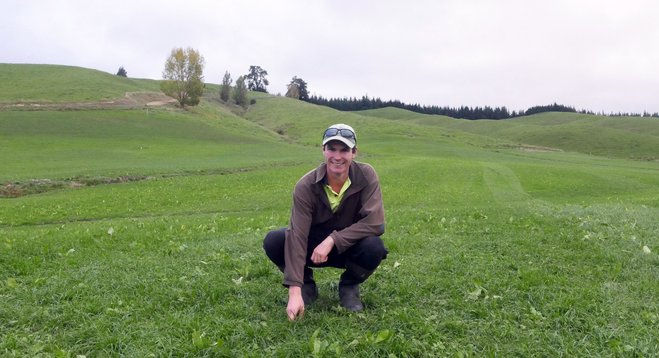First season sharemilking winds to a relatively positive close
Brightwater, 12 May: Use of supplements is down, the six week in calf rate is well up and although Michael and Cheryl Shearer won’t reach budgeted total MS production for 2015/16, they’ve had a kind autumn and have so far managed to contain financial losses due to the low payout.
In fact, Michael says, considering they’ve run the farm as ‘exactly’ a System 4 this season, plus had an outbreak of FE, they’re not unhappy with having kept their share of farm working expenses to $1.75/kg MS.
Next season, the farm will move more towards a System 3, with the total feed bill likely to be cut by $70,000.
This season’s 200 t of palm kernel and 100 t of grass silage is back on supplements fed in 2014/15 under the previous sharemilkers (330 t PK and 150 t grass silage) but there is still room for more savings here.
Meantime they’re excited about the potential for more chicory on the flats after this year’s trial crops performed well (12t DM/ha on irrigated flats, 9t DM/ha on dry hill).
Michael says in hindsight he would have been better to stop grazing and spray out chicory for new perennial pasture a couple of weeks earlier than he did. Both the newly sown Trojan/Bealey and Trojan/Rohan have struck well but these paddocks are still soft and vulnerable after having been worked again, because soils on the farm are reasonably heavy.
“When Graham Kerr visited recently we discussed this! His point was why would we compromise a 150 t crop of grass for an extra tonne or two of chicory, and I think that’s a good way of looking at it. At the time the chicory was looking really good and it felt bad to spray it out when there was still feed there, but it probably would have been better if we had…”
Michael’s measured the best paddocks on the farm at 14 t DM/ha this season, and says it will be interesting to see what the new pastures yield in 2016/17.
With recent rain and soil temperatures still un-seasonally warm, daily pasture growth is averaging about 35 kg DM/ha, which is ahead of budget. Half the cows will be wintered on the milking platform, and half on the 60 ha support block.
Planned start of calving is 27 July; pregnancy testing showed a 12% empty rate and more importantly a 6WIC rate of 75%, which they’re delighted with after a 12 week mating in a challenging spring.
“On one hand, the cows certainly weren’t producing much at the time. On the other, however, we didn’t use any CIDRs, but something that I think worked really well was our farm advisor’s suggestion to put the non-cyclers on once a day, and run them with a bull. We started with 70-80 in that mob; after three weeks there were only about 10 left and by six weeks they’d all cycled.”


